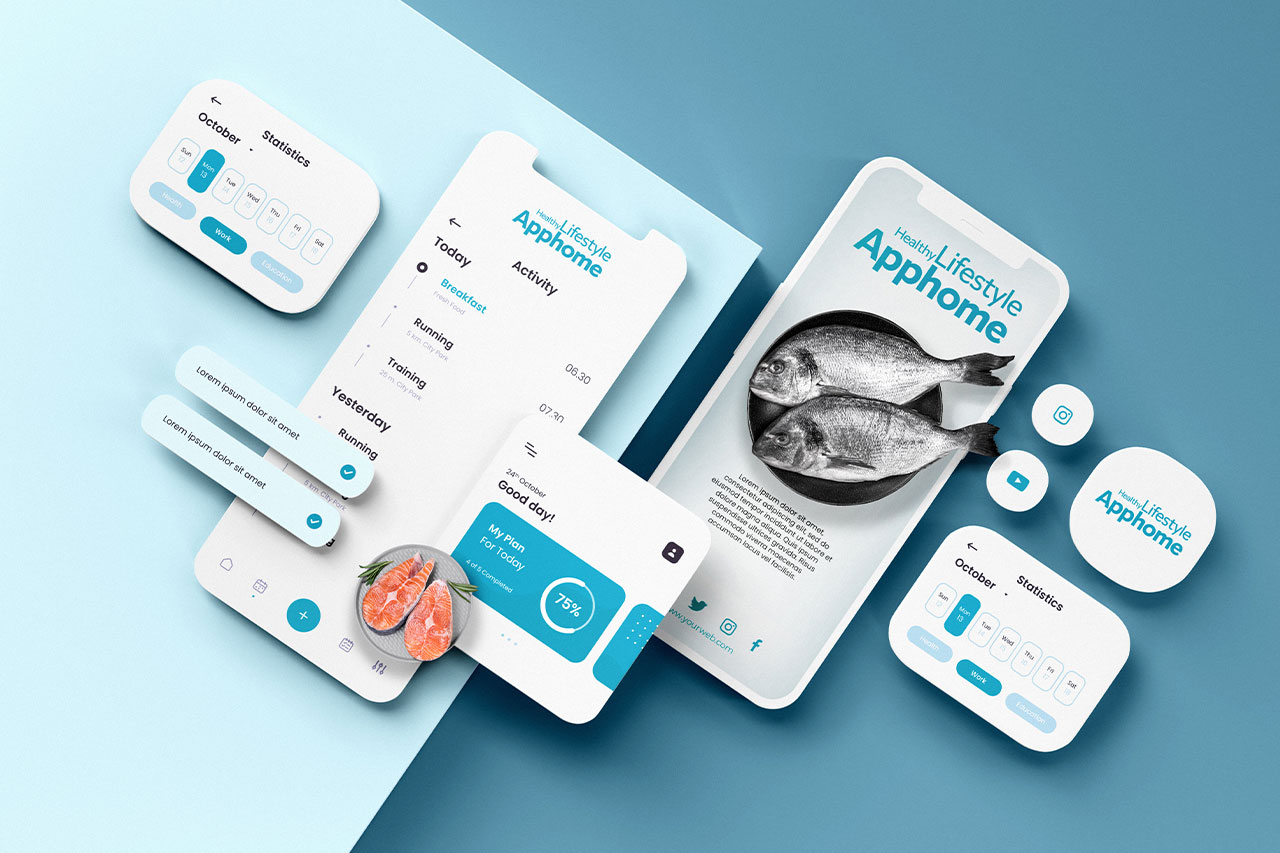With over 3.8 billion smartphone users worldwide, mobile apps have seamlessly integrated into our daily routines, defining the landscape of the fast-paced digital era. Whether for communication, productivity, or entertainment, users expect a seamless and intuitive experience when interacting with mobile applications.
To meet these expectations, developers and designers must adhere to best practices for mobile app design.
In this comprehensive guide, we will delve into key principles and strategies to create user-friendly and visually appealing mobile apps.
Table of Contents
Understanding the Importance of Mobile App Design
Mobile app design plays a pivotal role in attracting and retaining users. A well-designed app not only enhances user satisfaction but also contributes to increased engagement and positive reviews.
To achieve this, consider the following best practices:
1. User-Centric Approach
Put yourself in the shoes of your users. Understand their needs, preferences, and behaviors. Conduct user research to gather insights that can guide your design decisions. Empathy is the cornerstone of successful mobile app design.
2. Intuitive Navigation
Seamless navigation is crucial for user retention. Implement a clear and intuitive navigation structure that allows users to move effortlessly through the app. Use familiar icons and gestures to enhance user understanding and interaction.
Key Elements of Successful Mobile App Design
Now, let’s explore specific elements that contribute to an effective mobile app design:
3. Responsive Design for Multiple Devices
Given the diversity of devices with varying screen sizes and resolutions, it’s essential to adopt a responsive design approach. Ensure that your app functions seamlessly on smartphones and tablets, providing a consistent experience across different devices.
4. Optimized Performance
Mobile users are notorious for their impatience. An app that lags or crashes is a surefire way to lose users. Optimize your app’s performance by minimizing load times, compressing images, and regularly conducting performance testing.
5. Consistent Branding and Visual Elements
Maintain a consistent visual identity throughout your app. Use a cohesive color scheme, typography, and branding elements. Consistency builds brand recognition and helps users feel more at home within your app.
Mobile App Design Best Practices: Technical Aspect
Moving beyond the aesthetic aspects, let’s delve into the technical considerations for mobile app design:
6. Optimized User Interface (UI) and User Experience (UX)
Strive for simplicity and clarity in your app’s UI. Steer clear of excessive elements and unnecessary features that may inundate users. Prioritize the most critical features, ensuring they are easily accessible. Focus on delivering a seamless and enjoyable UX by incorporating user feedback into your design iterations.
7. Touch-Friendly Design
Remember that mobile devices primarily rely on touch interactions. Design your app’s interface with touch-friendly elements, such as appropriately sized buttons and interactive areas. Account for variations in touch gestures, and ensure that users can navigate your app effortlessly with their fingertips.
8. Cross-Platform Compatibility
Consider designing your app to be compatible with multiple platforms, such as iOS and Android. While each platform has its design guidelines, maintaining a level of consistency ensures a familiar experience for users who switch between devices.
Staying Ahead with Emerging Trends in Mobile App Design
As technology evolves, so do design trends. Staying informed about the latest innovations can give your app a competitive edge.
Here are some trends that are shaping the future of mobile app design:
9. Dark Mode Integration
Dark mode is not merely a passing trend; it has evolved into a preferred choice for a substantial number of users. Integrating a dark mode option into your app can improve readability, reduce eye strain, and cater to users who prefer a darker interface.
10. Gesture-Based Navigation
With the rise of bezel-less screens, gesture-based navigation has gained popularity. Explore intuitive gestures that enhance the user experience, such as swiping, pinching, and tapping.
Testing & Iterating for Improvement
No mobile app design is perfect from the outset. Regular testing and iteration are essential for refining your app and addressing user feedback. Establish a feedback loop with your users through beta testing, reviews, and analytics. Use this data to identify pain points and areas for improvement, ensuring your app evolves with user needs and technological advancements.
Beyond the initial launch, staying responsive to user feedback and market trends is crucial. Regularly conduct usability testing to observe how real users interact with your app and identify any stumbling blocks. Leverage beta testing programs to gather insights from a diverse user base before the official release.
Additionally, monitor app store reviews and engage with users to understand their concerns and suggestions. Analytics tools provide valuable data on user behavior, helping you pinpoint areas for enhancement. By fostering a dynamic feedback loop, you not only address current issues but also position your app for ongoing success in a rapidly evolving digital landscape.
Remember, the journey of mobile app design is a continuous loop of innovation and refinement.
Conclusion
Mastering mobile app design involves a combination of user-centric principles, technical expertise, and staying attuned to emerging trends. By adhering to best practices and prioritizing the user experience, you can create mobile apps that not only meet but exceed user expectations.
Keep evolving, testing, and refining your designs to stay ahead in the dynamic landscape of mobile app development.






















+ There are no comments
Add yours